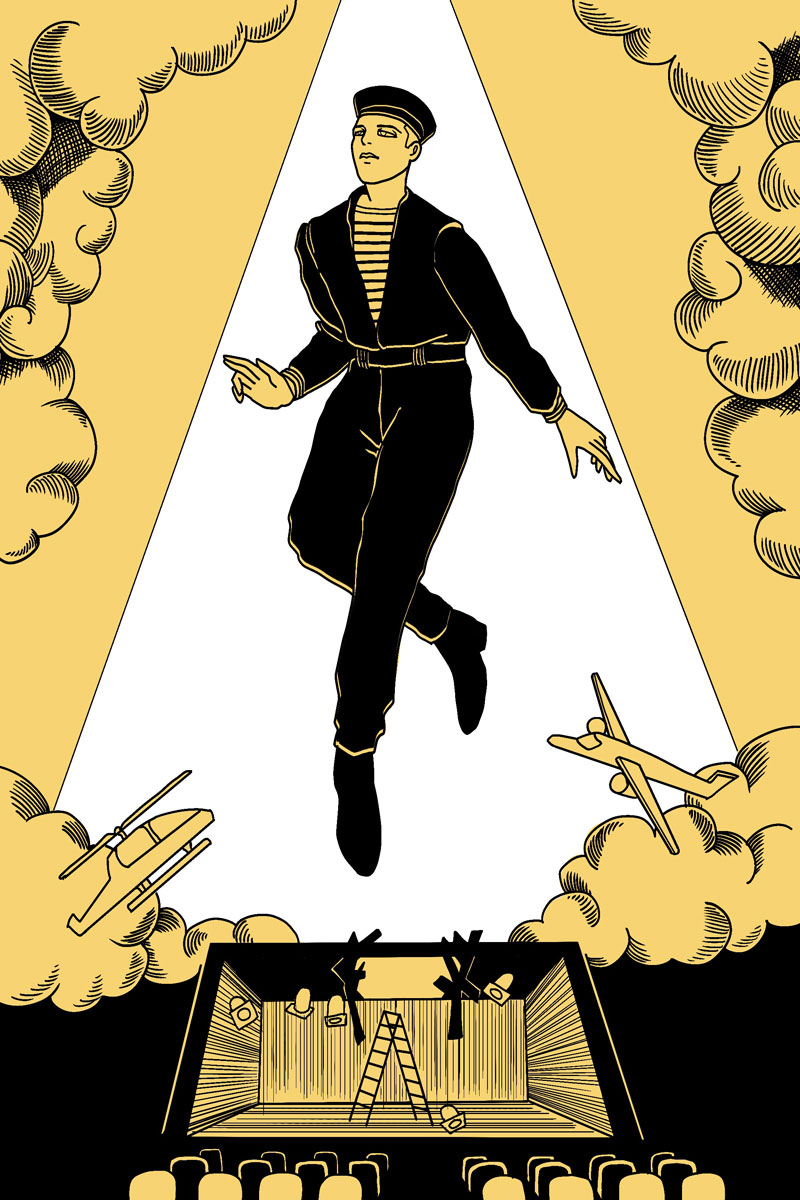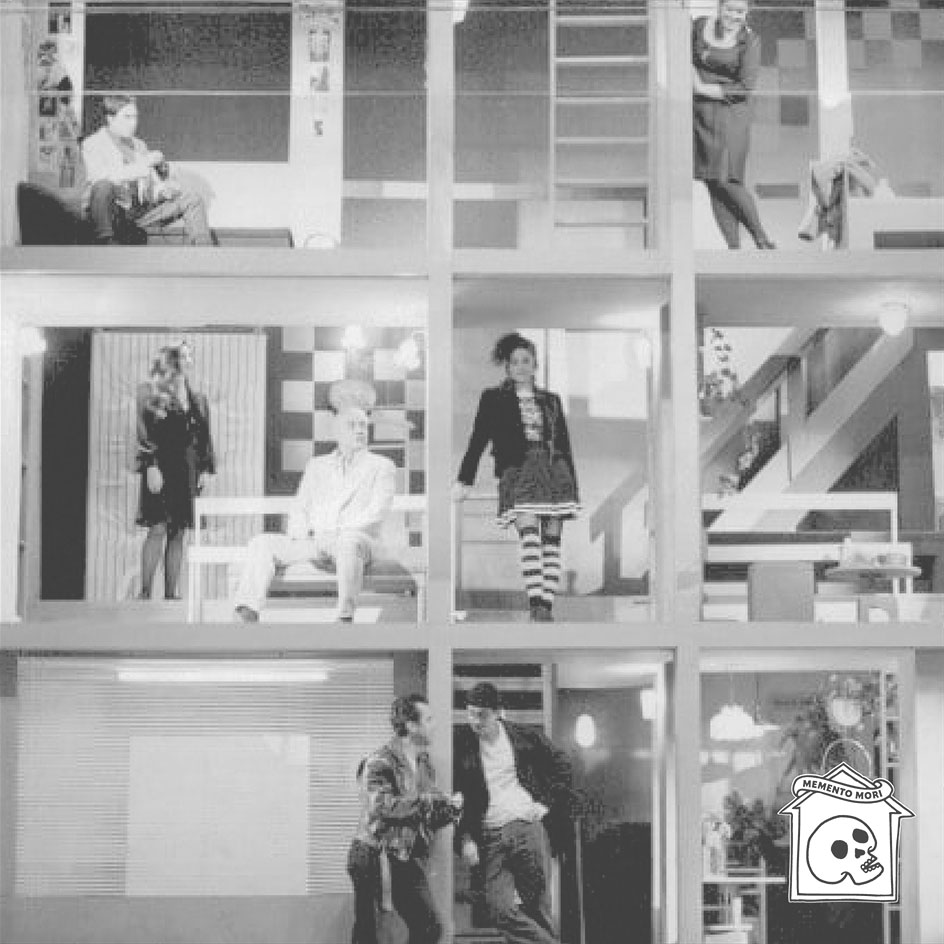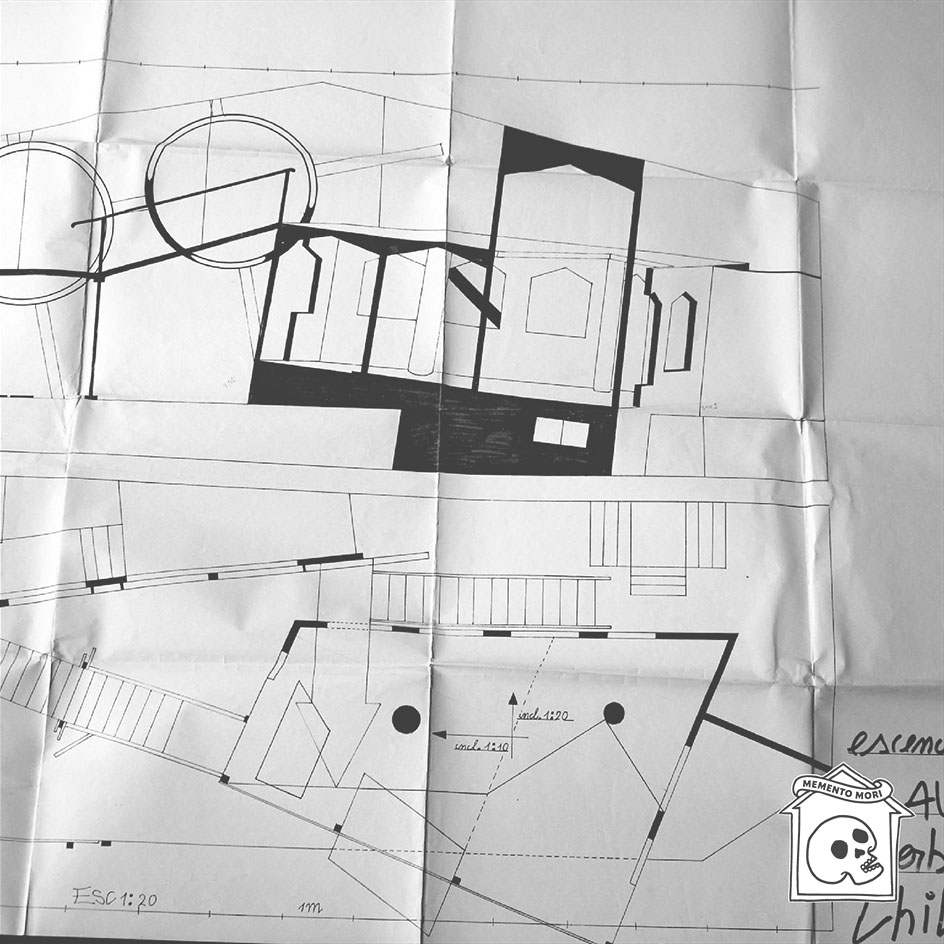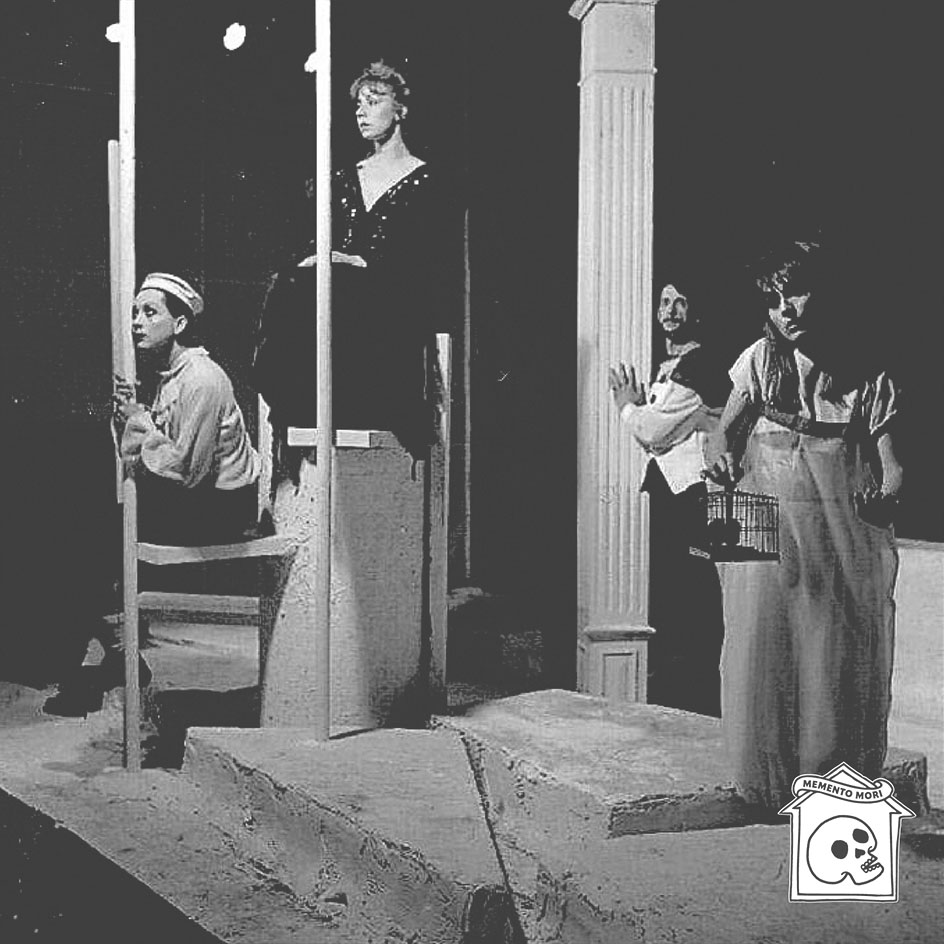

“As if his life had been written into a play, Herbert Jonckers always seemed to fly high. He thought big because he created spaces that were so impossible their structures extended beyond the stage. Moreover, through his skill and ingenuity, he seemed to transmute matter, which prompted people to speculate: some said he was a magician whose birth dated back to ancient times, while others believed his talent could only have derived from a pact with a demon.
The enigma of his work lay in his ability to invent entire universes on small, improvised stages that he bathed with powerful jets of warm, vibrant light. While the praise he received attracted many friends, it also brought along many critics who doubted his talent. Nevertheless, everyone - without exception - was dumbfounded when one day, as he was filtering a spotlight from the top of a staircase, he rose. He began to float and kept going up. He flew through the light grid, dodging the rafters, and even broke through the ceiling without anyone being able to get him down. They tried helicopters, airplanes, and even a zeppelin, but Herbert Jonckers kept rising until he was never heard from again."
“Como si su vida hubiera estado escrita en alguna obra de teatro, Herbert Jonckers siempre parecía volar alto. Pensaba en grande, pues creaba espacios tan imposibles como estructuras que se extendían más allá del escenario. Gracias a su habilidad e ingenio, parecía transmutar la materia, lo que hacía especular a la gente: algunos decían que era un mago cuyo nacimiento se remontaba a tiempos remotos, mientras que otros pensaban que su talento solo podía provenir de un pacto con algún demonio.
El enigma de su trabajo residía en su capacidad de inventar universos enteros en pequeños e improvisados escenarios que luego bañaba con potentes chorros de luz cálida y vibrante. Los elogios que recibió trajeron consigo a muchos amigos, pero también a quienes dudaban de su talento. No obstante, todos -sin excepción- quedaron boquiabiertos cuando un día, mientras filtraba un foco desde la cima de una escalera, se elevó. Comenzó a flotar y no paró de subir. Atravesó la parrilla de focos esquivando las vigas del teatro e, incluso, rompió el techo sin que nadie pudiera bajarlo. Probaron helicópteros, aviones y hasta un zeppelin, pero Herbert Jonckers siguió ascendiendo hasta que no se supo más de él.”








Herbert Jonckers was a Belgian stage designer and visual artist, trained at the St. Luc Institute in Brussels. He was heavily tied to Chile from the early 1980s, thanks to his significant participation in the Compañía Teatro Fin de Siglo, which he co-founded and worked in as an all-in-one designer of stage productions, performances and action art, as well as being its graphic designer.
Jonckers' work aimed to renew traditional notions of stage space and led him to collaborate with outstanding creators in most of the country's conventional and non-conventional theatrical spaces. Through his particular vision, he developed the theory and methodology of the Dramaturgy of Space: concepts that would later be used in artistic education both in Latin America and Europe. He was also in charge of the design of the winning productions of the 1st National Playwriting Showcase. Here, Jonckers' extraordinary creativity was made evident by his contribution to new approaches in staging dramatic texts.
Jonckers was noted for his critical and alternative outlook, as well as his artistic sensibility. His scenic approach consisted of creating diverse fictional and avant-garde worlds. Not only did he paint the fabrics for the costumes, he also took part in the construction of the scenery and hung the spotlights.
Herbert Jonckers fue un diseñador escénico y artista visual belga, formado en el Instituto St. Luc de Bruselas. Estuvo fuertemente vinculado a Chile desde comienzos de la década de los 80, gracias a su relevante participación en la Compañía Teatro Fin de Siglo, de la que fue cofundador y diseñador integral de montajes, performances y acciones de arte; además de creador gráfico.
El trabajo de Jonckers apuntaba a una renovación de los conceptos tradicionales del espacio escénico, lo que lo llevó a colaborar con destacados creadores, en gran parte de los espacios teatrales convencionales y no convencionales de la escena nacional. Gracias a su particular visión se desarrolla la teoría y metodología de la Dramaturgia del Espacio, conceptos utilizados en la enseñanza artística tanto en América Latina como en Europa. Además fue el encargado de llevar a cabo los diseños de los montajes ganadores de la 1° Muestra Nacional de Dramaturgia.
Lo anterior dejó en evidencia su gran creatividad, aportando con nuevas miradas a la puesta en escena de los textos dramáticos.
Jonckers destacaba por su mirada crítica y alternativa, además de su sensibilidad artística. Su propuesta escénica consistía en crear diversos mundos ficcionales y vanguardistas. A la vez que pintaba las telas de los vestuarios, participaba en la construcción de sus escenografías y colgaba los focos en el escenario.